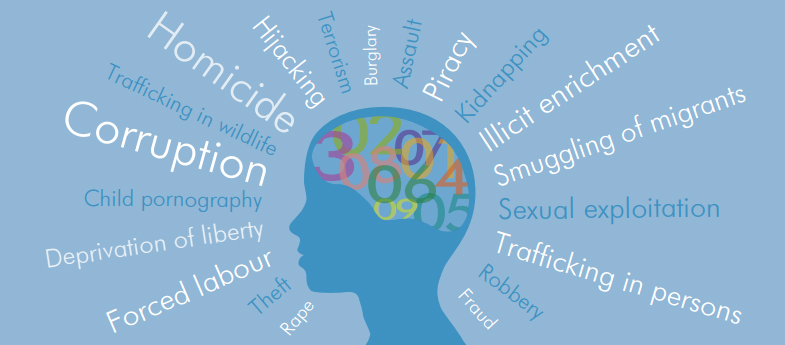UNODC Eastern Africa News and Stories
You are here: Home / News
UNODC's crime classification: a key tool against criminal activities worldwide

14 August 2015 - When people need to talk about crime at the international level, there is a multitude of terms and concepts which are hard to compare, and which prevent a common understanding and measurement of criminal activities. Language is only part of the problem (for example, the Spanish term robo can be translated into English both as robbery or theft). The differences in legal definitions and statistical categories are even more sensitive. Data on intentional homicides, for example, may include involuntary manslaughter in one country but not in another; kidnapping may include the abduction of minors or not; and concepts such as cybercrime or trafficking in protected species may or may not be included in the crime statistics of different countries.
The International Classification of Crime for Statistical Purposes was developed by UNODC in order to overcome such challenges. Endorsed by the United Nations Statistical Commission (UNSC) in its 46th session and by the Commission on Crime Prevention and Criminal Justice (CCPCJ) in its 24th session, the ICCS classifies criminal offences based on internationally agreed concepts, definitions and principles in order to enhance the consistency and international comparability of crime statistics, and improve analytical capabilities at both the international and national levels.
At the international level, the ICCS improves the comparability of crime data between countries. Standardized concepts and definitions allow for the systematic collection, analysis and dissemination of data, and also respond to the demand for in-depth research and analysis of transnational crime. At the national level, the ICCS can be used as a model to provide structure and organize statistical data that are often produced according to legal rather than analytical categories. Moreover, the ICCS can harmonize data across domestic criminal justice institutions (such as police, prosecutor offices, courts, or prisons) and across different data sources (administrative records or statistical surveys, for instance). Likewise, the ICCS can be used as a tool to standardize data from sub-national entities that may have different statistical systems or legal frameworks.
To continue developing the ICCS and to fully implement its standards, UNODC will soon unveil the tool in the six official languages of the UN. The ongoing work being done regarding the ICCS - including having an advisory group which keeps it constantly updated, and providing technical assistance for its implementation - will result in more reliable crime statistics which are key in measuring crime levels, monitoring state responses to crime, evaluating anti-crime policies, and understanding criminal activity in different contexts.
Further information:
UNODC's International Classification of Crime for Statistical Purposes
Source: www.unodc.org